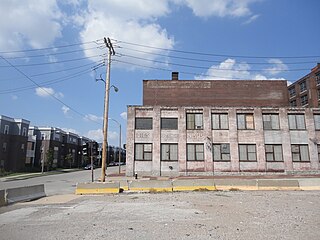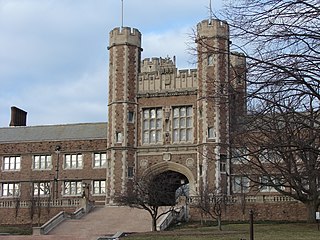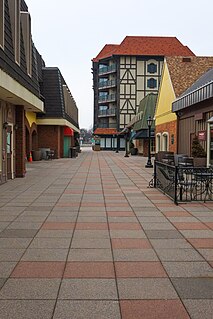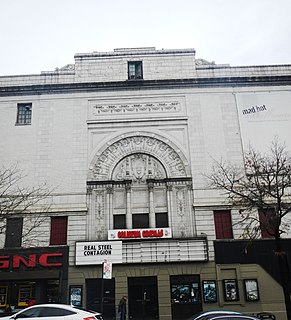
Chicago Coliseum was the name applied to three large indoor arenas in Chicago, Illinois, which stood successively from the 1860s to 1982; they served as venues for sports events, large (national-class) conventions and as exhibition halls. The first Coliseum stood at State and Washington streets in Chicago's downtown in the late 1860s. The second, at 63rd Street near Stony Island Avenue in the south side's Woodlawn community, hosted the 1896 Democratic National Convention. The third Chicago Coliseum was located at 1513 South Wabash Avenue on the near south side; it hosted five consecutive Republican National Conventions, and the Progressive Party National Convention in 1912 and 1916. It also hosted the Lincoln Jubilee in 1915. In the 1960s and early 1970s it served as a general admission venue for rock concerts, roller derbys and professional wrestling matches; it closed in 1971 and was sold for redevelopment in 1982; however, portions of the building remained standing until the early 1990s.
The St. Louis Car Company was a major United States manufacturer of railroad passenger cars, streetcars, interurbans, trolleybuses and locomotives that existed from 1887 to 1974, based in St. Louis, Missouri.

Coca-Cola Coliseum is an arena at Exhibition Place in Toronto, Ontario, Canada, used for agricultural displays, ice hockey, and trade shows. It was built for the Canadian National Exhibition (CNE) and the Royal Agricultural Winter Fair in 1921. Commonly known as the Coliseum, it was formerly known as the CNE Coliseum and Ricoh Coliseum, and since 1997 it has been part of the Enercare Centre exhibition complex. It serves as the home arena of the Toronto Marlies ice hockey team, the American Hockey League farm team of the Toronto Maple Leafs. For the 2015 Pan American Games the venue hosted the gymnastics competitions and was known as the Toronto Coliseum.

The Grand Center Arts District is located in the Midtown St. Louis Historic District north of the Saint Louis University campus. Referred to colloquially as Grand Center, the neighborhood's formal name is Covenant Blu Grand Center. The neighborhood's is a member of the Global Cultural Districts Network.

The Bottle District is a six-block, 17-acre area north of Downtown St. Louis, Missouri, that is being redeveloped as a mixed-use entertainment and residential district. It sits north of the city's convention center and west of Laclede's Landing.

Hirsch Memorial Coliseum is 10,000-seat multi-purpose arena in Shreveport, Louisiana, designed by the late local architect Edward F. Neild Jr. (1908–1958) who, with his father in 1937, had designed the Louisiana State Exhibit Museum in Shreveport. The coliseum is named after William Rex Hirsch, a former fair president, manager and treasurer. The building completed construction in 1954, the year of Hirsch's death, and initially was planned to have the name The Youth Building. The coliseum has been used for a variety of events through the years, with dirt being brought in and placed on the floor for rodeos and tractor pulls. It is located adjacent to the Independence Stadium and across from Fair Park High School in Shreveport. Hirsch coliseum is very similar in design, though smaller in size to the John M. Parker Agricultural Coliseum, owned and operated by the Louisiana State University Campus in Baton Rouge. However, the Parker coliseum has a dirt floor arena and is mainly used for livestock-type events, with portable hard floors laid on top of the dirt for other types of events such as basketball games or concerts.

The Contemporary Art Museum St. Louis is an art museum for contemporary art, located in St. Louis, Missouri. Known informally as the CAM St. Louis, the museum is located at 3750 Washington Boulevard in the Grand Center Arts District. The building is designed by the American architect Brad Cloepfil.
The St. Louis Stars, originally the St. Louis Giants, were a Negro league baseball team that competed independently from as early as 1906 to 1919, and then joined the Negro National League (NNL) for the duration of their existence. After the 1921 season, the Giants were sold by African-American promoter Charlie Mills to Dick Kent and Dr. Sam Sheppard, who built a new park and renamed the club the Stars. As the Stars, they eventually built one of the great dynasties in Negro league history, winning three pennants in four years from 1928 to 1931.

Downtown St. Louis is the central business district of St. Louis, Missouri, the hub of tourism and entertainment, and the anchor of the St. Louis metropolitan area. The downtown is bounded by Cole Street to the north, the river front to the east, Chouteau Avenue to the south, and Tucker Boulevard to the west. The downtown is the site of many corporate headquarters, including Stifel Financial Corp., HOK, Spire Inc, and a host of other companies.

Missouri's first congressional district is in the eastern portion of the state. It includes all of St. Louis City and much of northern St. Louis County, including the cities of Maryland Heights, University City, Ferguson and Florissant. The district is easily the most Democratic in Missouri, with a Cook Partisan Voting Index of D+29; the next most Democratic district in the state, the Kansas City-based 5th, has a PVI of D+7. It is roughly half African-American.

The New York Coliseum was a convention center that stood at Columbus Circle in Manhattan, New York City, from 1956 to 2000. It was designed by architects Leon Levy and Lionel Levy in a modified International Style, and included both a low building with exhibition space and a 26-story office block. The project also included the construction of a housing development directly behind the complex.

Midtown is a neighborhood in St. Louis, Missouri. It is located 3 miles (4.8 km) west of the city riverfront at the intersection of Grand and Lindell Boulevards. It is home to the campus of Saint Louis University and the Grand Center Arts District.

St. Alphonsus Liguori "Rock" Catholic Church is an historic Black Catholic church in St. Louis, Missouri.

Brookings Hall is a Collegiate Gothic landmark on the campus of Washington University in St. Louis. The building, first named "University Hall", was built between 1900 and 1902 and served as the administrative center for the 1904 World's Fair. The first cornerstone was laid on November 3, 1900.

The St. Louis Mercantile Library, founded in 1846 in downtown St. Louis, Missouri, was originally established as a membership library, and is the oldest extant library west of the Mississippi River. Since 1998 the library has been housed at the University of Missouri-St. Louis as a Special Collections library within the Thomas Jefferson Library. The majority of library materials can be assigned to one of four categories: the General (Core) Collection, the John W. Barriger Railroad Library, the Herman T. Pott National Inland Waterways Library, or the Art Museum. The collections of the St. Louis Mercantile Library have been named a City Landmark by the city of St. Louis, Mo., due to the cultural significance of the library.

St. Louis Exposition and Music Hall was an indoor exposition hall, Music Hall and arena in St. Louis, Missouri from 1883 to 1907.

The Merchants Exchange Building was a building at Third Street at Chestnut and Pine in St. Louis, Missouri, from 1875 to 1958 that housed the St. Louis Merchants Exchange and hosted the 1876 Democratic National Convention.

Westport Plaza is a 42-acre (170,000 m2), commercial development, resort, and entertainment center located in Maryland Heights, Missouri. Westport was built by a prominent St. Louis developer, Thomas J. White, and opened in 1973. Westport since has grown to over 700,000 square feet (65,000 m2) of office buildings, restaurants, entertainment venues, and hotels. The property was purchased jointly in 2007 by real estate company Golub & Co. and Boston-based Intercontinental Real Estate Corp. In 2012, Westport Plaza was purchased by Lodging Hospitality Management. The entertainment complex hosts many popular events over the year including the St. Louis Beer and Brat Festival, lunchtime concerts, "Parties at the Plaza" events, jazz concerts and Archon 34.

Sacramento City Hall is a five-story, 267,000-square-foot building that combines modern and historic structures in Sacramento, California. The building can house up to 730 staff members. Prominent local architect Rudolph A. Herold designed the building in 1908. Completed in 1909, the building is located at 915 I Street. Sacramento City Hall went through a major $11 million restoration from 2003 to 2005. The restoration was part of an overall $60 million civic center project with city hall as the cornerstone. Another part of the civic center project was the construction of underground parking garage for 170 cars. Sacramento City Hall now houses all of the city's significant municipal functions.

The Coliseum Theatre was a cultural and performing arts center located at 4260 Broadway between West 181st and 182nd Streets in the Washington Heights neighborhood of Manhattan, New York City. A full-block building, it was bounded on the east by Bennett Avenue.



















